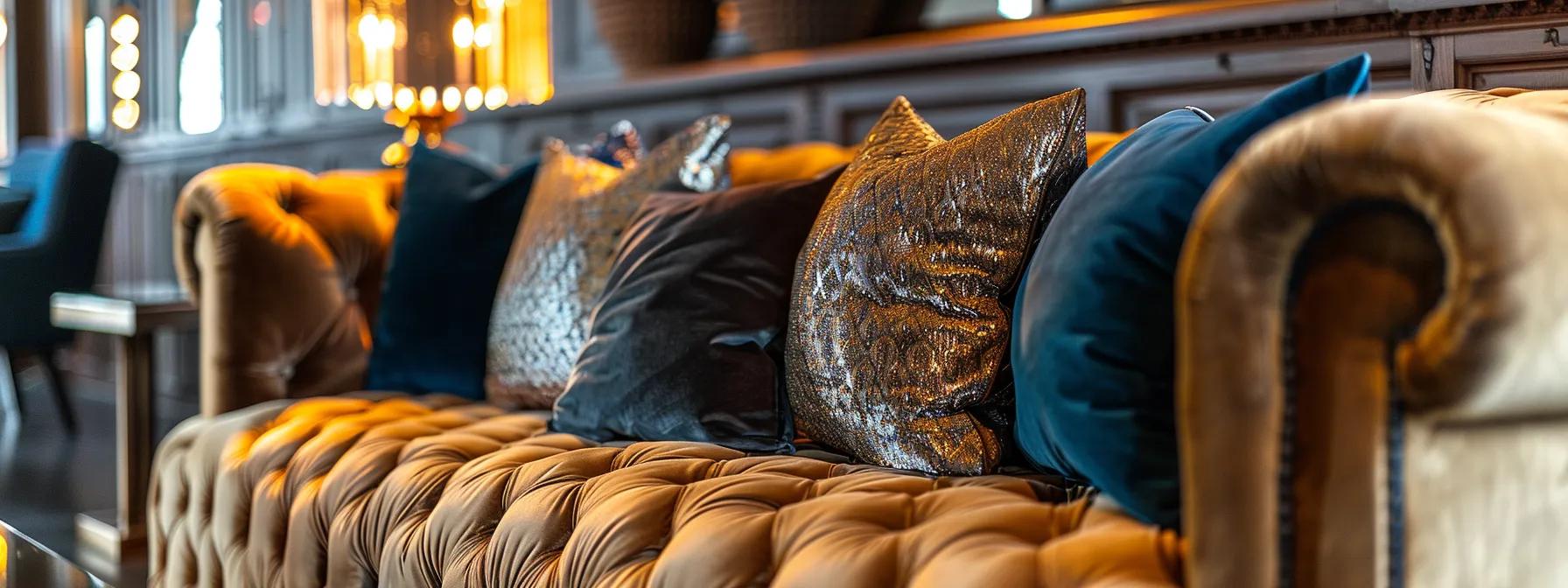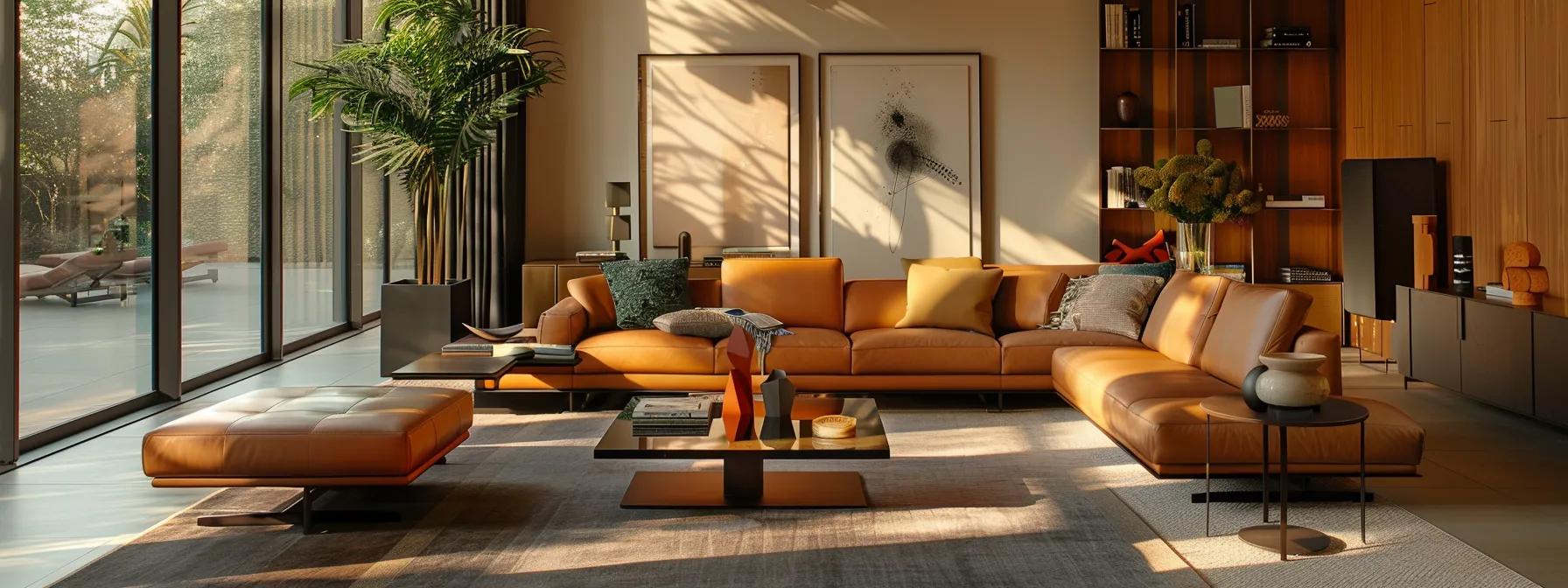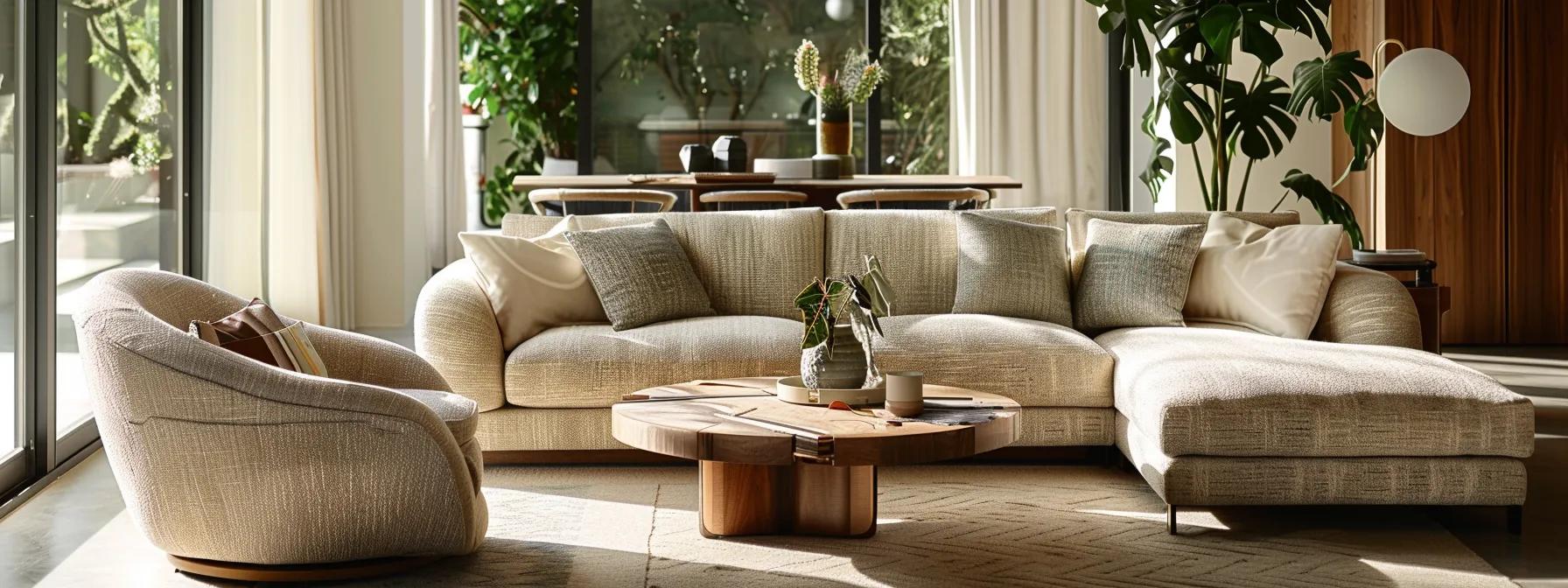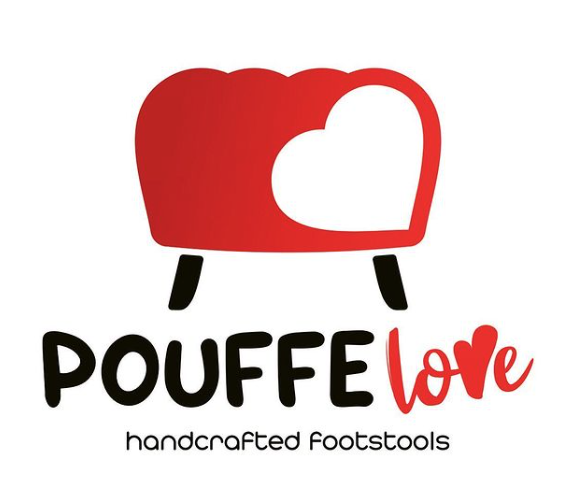Material Guide: Velvet, Bouclé, and Eco-Leather – Which One to Choose for Your Home?
Choosing the right upholstery material is crucial for any furniture investment. This guide explores how aesthetic appeal, durability, maintenance requirements, and design harmony affect your furniture’s performance. Whether redesigning your living room or adding a statement piece to your dining area, understanding these differences ensures a long-lasting, stylish decision.
Understanding Why Choosing the Right Upholstery Material Has a Big Impact on the Look and Practicality of Your Furniture
The upholstery material you choose defines your furniture’s look, longevity, and functionality. Fabric texture and sheen set the visual character—smooth, high-sheen textiles evoke modern minimalism, while textured weaves suggest warmth and comfort. Durability is key: hardwearing fabrics withstand daily use better, and ease of cleaning helps maintain a neat appearance. Whether your home has pets, kids, or is used for formal settings, matching fabric to your lifestyle ensures both design appeal and practicality.
How Fabric Texture and Sheen Define Your Furniture‘s Visual Character
The texture and sheen of fabric instantly communicate quality and style. Lustrous textiles exude elegance, while textured materials bring warmth and depth by absorbing or reflecting light. Designers use these qualities along with complementary decor like curtains and rugs to create a cohesive look.
The Connection Between Upholstery Material and Long-Term Furniture Durability
A fabric’s durability depends on its weave, fiber type, and finish. Natural fibers such as cotton and wool offer comfort and breathability but may need more care, while synthetic fibers like polyester and microfiber resist stains and moisture effectively. High-quality fabrics resist pilling and fading, ensuring your investment lasts.
Daily Living Considerations: Matching Fabrics to Your Lifestyle Needs
For busy households with children or pets, durable fabrics that handle spills and frequent cleaning are essential. In more formal environments, luxurious textures may be worth the extra care. Choosing fabric that suits your daily routines is key to keeping your furniture both attractive and functional.
Cleaning and Upkeep: How Material Choice Affects Maintenance Efforts
Some materials require minimal cleaning, while others benefit from regular maintenance. Fabrics with inherent stain resistance simplify cleaning, whereas others may need professional care. Understanding cleaning needs—from regular vacuuming to occasional deep-cleaning—extends the life of your upholstery.
Aligning Upholstery Selections With Your Home’s Overall Design Scheme
Your upholstery should complement existing decor, matching colors, patterns, and textures found in drapery, flooring, and accessories. A well-integrated fabric enhances your interior design, whether you favor minimalist modernity or rich traditional aesthetics.
A Closer Look at Velvet Upholstery for Your Living Space

Velvet upholstery is celebrated for its plush, rich appearance and luxurious appeal. Its soft texture and light-reflecting properties create subtle tone variations that make furniture a standout feature, ideal for intimate settings.
Defining the Richness and Softness of Velvet Fabrics
Velvet’s dense pile provides a lush, sumptuous feel that adds comfort and depth to its color. This quality makes velvet a focal point in modern design, lending dramatic appeal with its reflective properties.
Assessing Velvet‘s Resilience to Wear and Tear in Households
High-quality velvet is treated to resist crushing and daily wear. Although lower-pile variants may show impressions, robust velvet options can handle heavy traffic without sacrificing their luxurious look.
Care Guidelines for Maintaining Velvet Furniture‘s Appearance
Velvet requires gentle, regular cleaning—a soft brush to dust off and spot-clean stains with appropriate cleaners. Occasional professional cleaning helps maintain its softness and sheen over time.
Ideal Settings and Furniture Styles for Velvet Application
Velvet works best in sophisticated, cozy spaces. It is popular for accent chairs, sofas, and dining chairs in both traditional and modern interiors, pairing well with metallic accents and rich wood tones.
Exploring Different Types of Velvet and Their Qualities
Variations such as crushed, embossed, and semi-velvet each offer unique textures. Crushed velvet has an irregular finish for a contemporary look, while embossed velvet adds patterned relief for extra visual interest.
Getting to Know Bouclé Fabric for Home Furnishings
Bouclé fabric, known for its distinctive looped texture, offers a soft, tactile appeal and a casual look that works well in family spaces. Its textured surface adds depth, making it a practical choice for high-traffic areas.
The Distinctive Looped Texture and Comfort of Bouclé
Bouclé is made of looped yarns that create a pebbled surface, offering both visual interest and a cozy feel. This tactile quality adds subtle elegance without appearing overly formal.
Evaluating Bouclé’s Ability to Withstand Daily Use
Thanks to its durable construction, bouclé resists pilling and stretching effectively. This resilience makes it well-suited for family homes and areas that see frequent use.
Proper Care Techniques for Bouclé Upholstered Items
Regular vacuuming and gentle spot cleaning keep bouclé looking its best. Avoiding harsh chemicals ensures that its delicate loops remain intact and attractive over time.
Incorporating Bouclé for a Cozy and Modern Aesthetic
Bouclé blends warmth with modern style, making it a favorite for contemporary interiors. Its casual yet refined look suits sofas, accent chairs, or even as an accent on larger pieces.
Understanding Variations in Bouclé Weaves and Fiber Content
Bouclé comes in different weaves and fibers, including wool, cotton, and synthetic blends. Each variant offers distinct advantages in texture, durability, and maintenance, allowing you to choose the best option for your home’s needs.
Considering Eco-Leather as a Furniture Covering Option

Eco-leather is a sustainable, stylish alternative to traditional leather. Made from synthetic or plant-based sources, it mimics the look and feel of genuine leather while reducing environmental impact. It is ideal for modern interiors where durability and easy maintenance are priorities.
The Appeal and Composition of Eco-Leather Materials
Eco-leather blends polyurethane with recycled materials or natural fibers to replicate classic leather’s suppleness. This material balances durability with an ethical appeal, making it popular among contemporary designers.
How Eco-Leather Performs Regarding Durability and Stains
Engineered for toughness, eco-leather resists scratches, stains, and spills with ease. Its non-porous surface repels moisture, ensuring a polished look even in busy households.
Simple Steps for Cleaning and Preserving Eco-Leather Surfaces
Cleaning eco-leather is straightforward—a damp cloth with mild detergent is usually enough. Avoid abrasive cleaners to maintain its sleek finish and extend its life.
Versatile Applications for Eco-Leather in Home Decor
Its smooth appearance makes eco-leather suitable for a variety of furniture styles, from minimalist sofas to traditional accent chairs. It is especially loved in high-traffic areas like living rooms and offices.
Identifying Quality Markers in Eco-Leather Products
Look for eco-leather with clear composition details and environmental certifications. A uniform texture and durable finish indicate a high-quality product that meets both aesthetic and sustainability criteria.
Comparing Velvet, Bouclé, and Eco-Leather Side-by-Side
Comparing these materials side-by-side highlights their unique advantages. Velvet is luxurious with a rich sheen, bouclé offers a distinctive, casual texture, and eco-leather presents a modern, low-maintenance option. Assessing their tactile qualities, durability, and upkeep requirements can guide you to the most suitable choice based on your lifestyle and design needs.
Visual and Tactile Differences Among the Three Materials
Velvet’s soft, plush pile contrasts with bouclé’s looped texture and eco-leather’s sleek finish. These differences help you align your material choice with the specific look and feel you desire.
A Comparative View of Durability and Lifespan Expectations
While all three options can be durable, eco-leather and bouclé typically excel in high-traffic areas. Velvet, with proper care, performs well in more formal settings with less daily use.
Contrasting Maintenance Requirements for Each Fabric
Eco-leather generally needs only a simple wipe-down, whereas velvet and bouclé demand more routine upkeep such as spot cleaning or vacuuming. Your choice may depend on how much time you want to spend on maintenance.
Suitability for Homes With Children or Pets: A Material Matchup
In active households, eco-leather’s ease of cleaning and resistance to spills make it a top choice. Bouclé also withstands frequent use well, though its texture can trap dust. Velvet may require extra care in homes with pets or small children.
Price Point Variations Between Velvet, Bouclé, and Eco-Leather
Price varies with quality and material type. Premium velvet and eco-leather tend to be more expensive, while bouclé can be a cost-effective mid-range option. Budget considerations alongside design priorities will help finalize your choice.
Making Your Final Upholstery Decision for a Perfect Home Fit

Your final choice should balance personal style, functionality, and practical needs. Consider how much use the furniture will get and whether a low-maintenance option or a more luxurious tactile experience is a priority. The right material not only enhances your decor but also fits your lifestyle.
Matching Material Strengths to Specific Room Functions
For high-traffic areas, eco-leather or robust bouclé may be ideal, while velvet can enhance a formal space with its rich texture.
Factoring in Your Personal Style and Desired Atmosphere
Your style—minimalist, eclectic, or traditional—will influence your choice. Each material sets a distinct mood, so opt for one that aligns with your interior design.
How Anticipated Usage Levels Should Steer Your Choice
Evaluate how often the furniture will be used. For heavy use, choose fabrics that are easy to clean and resistant to wear.
Balancing Aesthetic Preferences With Practical Necessities
Combine your design preferences with practical factors like cleaning ease and durability to ensure a balanced decision.
Selecting a Material That Complements Your Existing Decor Elements
Ensure that your upholstery complements the colors, textures, and materials already present in your home for a cohesive look.
The table above summarizes each material’s key attributes to help you decide based on functionality, style, and maintenance.
Frequently Asked Questions
Q: How do I decide which upholstery material is best for my home? A: Consider your lifestyle, room function, maintenance needs, and how well the fabric integrates with your decor.
Q: Is velvet upholstery suitable for households with pets? A: Velvet can work if you choose high-quality, treated fabrics and are prepared for more careful upkeep.
Q: How does eco-leather compare to genuine leather in terms of durability? A: Eco-leather offers similar durability and stain resistance while also being more environmentally friendly and easier to clean.
Q: What maintenance routine is recommended for bouclé fabric? A: Regular vacuuming and gentle spot cleaning help preserve bouclé’s unique texture.
Q: Can I mix different upholstery materials in one room? A: Yes, mixing materials can create visual interest as long as colors and textures are complementary.
Final Thoughts
Choosing the right upholstery material is a balance of design aesthetics and practical functionality. Whether you opt for the sumptuous elegance of velvet, the relaxed texture of bouclé, or the modern sustainability of eco-leather, a careful evaluation of each material’s benefits and care requirements will guide you to a decision that enhances your living space while meeting your daily needs.
